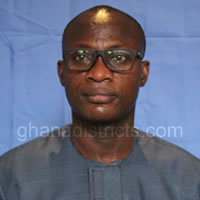Population Size
According to the 2000 Population and Housing Census report of Ghana, the population of West Akyem was 91,382 in 1970, 126,794 in 1984 and 154,161 by 2000, and growing at an annual growth rate of 2.5%. It is estimated to be 165,931 by the year 2004.
Population Distribution
The population density is 125 persons per square kilometer.
Age-Sex Distribution
The 2000 Population and Housing Census revealed that 48.9% of the population are males as against 51.1% females. This gives a sex ratio of 95.7 males to 100 females, which is lower than the Regional sex ratio of 96.4 males to 100 females.
Labour Force and Dependency Ration
About 57.5% of its population falling within the potential labour force (i.e. 15 - 64) and the economic dependency ratio is 1:0.8.
Occupational Distribution
The predominant occupation is subsistence agriculture, employing 52.1% of the total labour force. Trade/commerce employs 25.3%, Tradesmen/Artisans 12.0%, Public Servants 7.5% and the unemployed 3.0%.
Poverty Level
Inequality in the distribution of income is rife. Though the average household income on small scale is around ¢992,353, the distribution is very skewed. 60% of the income is in the hands of only 20% of the population.
Based on the method used by the Ghana Statistical Service for the study of poverty in Ghana, the poverty lines identified represent two-thirds and one-third of the value average living standards (per capital) respectively. These give us ¢661,569 as the actual poverty line and ¢330,784 as the hard core poverty line defining the very poor. This indicates that about 60% of the population of the earn below ¢661,569 per annum. Whilst about 52% are at the hard core poverty level.
With the current population of 151,161 (Ghana population and housing census, 2000) and the 60% of the population earning less than ¢661,569, the population which falls below the poverty line is estimated at 92,867 with the incidence of poverty at 0.60 or 60%.
Human Settlement Patterns
There are as many as 271 settlements.
Land and Use Distribution
The West Akyem measures about 1,018sqkm and is bout 5.3% of the total land area of the Eastern Region. The major land uses that can be identified within this land area are
- Agriculture and economic activities
- Settlements and development activities
- Rivers/Water bodies and forest reserves
- Difficult/Terrain and steep slopes and
- Roads, railways and high tension lines.
Settlement Patterns
With the exception of Asamankese, Adeiso and Osenase which are urban, the rest of the settlements are non-urban and very small communities. However, there is a very strong economic, social and political interaction between the smaller settlements and the urban centres. These settlements are separated from each other by a distance of between 2-8km and vehicles mostly speed along the main trunk roads within the district and from the capital by an average distance of 25km. The remaining smaller settlements are scattered all over, with their nucleus consisting of a primary school and an "odikro’s" palace/house. Most settlements are nucleated with a few dispersed ones.
Housing Characteristics
The average house occupancy rate is about 13 persons and the average household size is 6 persons. Room occupancy rate is 2.0 which is lower than the standard of 2.5 person/room and the national figure of 3.0
Migration
Analysis of the baseline survey reveals that, out of 234 households that responded, 29.5% had some members of their households residing" outside various reasons, notably to seek employment. The outward migrants were mainly between the ages of 18-and 59. About 39.13% of the migrants have had primary education whiles 47.83% and 13.04% have had J.S.S and Secondary/Technical education respectively .
Key Development Problem
1. Poor population management in the municipality.
Problems
- Strain on active labour force due to high dependency ratio
- Costly provision of population management services due to population spread over settlements’
- High incidence of unskilled labour force
- Migration to urban centres due to urbanization
- Inadequate population management counseling centres - PPAG
- Strain on limited facilities/resources
- No Homes for the aged
Population By Religion
The assembly is however, predominantly Christian. The baseline survey revealed that Christians constitute 90.1 % of the sampled population, Moslems constitute 7.8%, and Traditional religions constitute 2.1%. Churches can therefore be used to disseminate information and mobilize the population for development effectively.
Rural-Urban Split
According to the 2000 Population and Housing Census (PHC), 49,353 people or 32% of the population live in urban towns of Asamankese, Adeiso and Osenase whilst the remaining 104,808 or 68% live in the rural areas. However, data collected in the field in 2005 show that some of the rural settlements are getting urbanized while urban communities have recorded significant growths. This is good for the assembly since these urban centres will serve as growth poles in the distribution of services and facilities. Compared with the Eastern Region of 34.4% it is the least urbanized as Birim South, and Kwaebibirem are 49.0% and 38.9% respectively urbanized
| ||
Region | Urban % | Rural % |
Eastern Region | 34.4 | 65.6 |
West Akim | 32.0 | 68.0 |
Birim South | 49.0 | 51.0 |
Kwaebiberim | 38.9 | 61.1 |
Source: 2000 Population and Housing Census (PHC)
Date Created : 11/28/2017 12:03:43 AM





